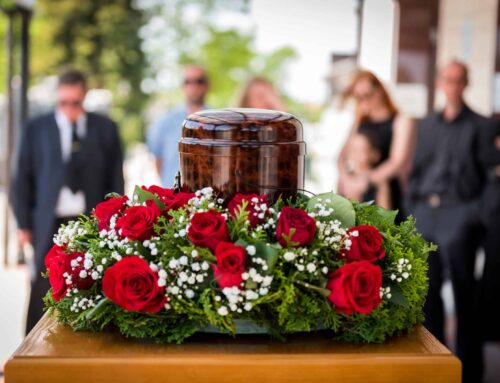It’s important that you understand that the act of cremation is the same, whether you pay for a basic cremation package or a traditional service followed by cremation. Another term for basic cremation is direct cremation. Here’s what you need to know about this most cost-effective end-of-life choice.
Table of Contents
What You Need to Know About Direct Cremation
Here’s what you need to know about modern cremation practices.
Cremation is more popular than burial in the U.S.
According to the National Funeral Directors Association, the cremation rate is 59.3%, and the burial rate is 35.7%. This means that there are more choices than ever before of cremation providers.
Many people want their cremated remains buried or interred in a cemetery.
According to the same report, 31.7% would prefer their cremated remains buried or interred in a cemetery (instead of kept in an urn at home or scattered).
Yes, you can bury cremated remains in a cemetery plot. You’ll need to pay a fee to open and close the grave, and some cemeteries require that the urn or cremation container is placed in a vault before burial.
Basic cremation is typically the least expensive option for those concerned about funeral costs.
Basic or direct cremation typically begins when the body of the deceased is transported from the place of death to the cremation provider. The body is placed in an alternative container provided by the cremation center. (There is no need to purchase an expensive casket for cremation.)
After the cremation process takes place, the cremated remains (or ashes) are returned to the family members. The family may choose to have the remains present at the funeral service. This type of service is often called a memorial service.
Cremation allows more flexibility in terms of service locations and times.
One benefit of cremation over burial is that you can have the service at your own home or any location since no arrangements need to be made to transport a casket. You can also wait to make final arrangements if the body was cremated or select a time for the service to make it convenient for all involved.
You can have a religious or secular funeral service with cremation.
There are a few faith groups that do not allow for cremation. Most Christian denominations allow for the practice – including the Catholic Church. Talk with your spiritual leader if you have questions about religion and cremation.
Both funeral homes and direct cremation providers offer basic cremation.
Direct cremation providers offer low-cost cremation. They can provide low-cost cremation because they do not have to charge additional fees for the extra staff and facilities.
However, your local funeral home may also offer a direct cremation package. Some families choose a funeral home over a direct cremation provider because they want to have a visitation with the body present before cremation. Most funeral homes offer casket rentals for this type of service.
Cremation services are the same regardless of provider.
The basic cremation package is the same – regardless of the provider. Only one body is placed in the cremation chamber at a time.
For low-cost cremation in and around Pennsylvania and New Jersey, contact the Philadelphia Cremation Society. Our basic cremation package costs less than $1,000. (Compare this amount with the national average. The national median cost of a funeral with cremation was approximately $6,971 in 2022.)
Philadelphia Cremation Society offers at-need or pre-need cremation packages. Contact us today to learn more.
Key Takeaways About Basic Cremation Services
- Cremation is the most popular method of disposition in the U.S.
- Cremated remains can be buried or interred in a cemetery.
- Basic cremation is typically the most affordable end-of-life option.
- Compared to burial, cremation allows more flexibility in terms of service locations and times.
- You can have a religious or secular funeral service with cremation.
- Both funeral homes and direct cremation providers offer basic cremation.
- Cremation services are the same regardless of provider.






